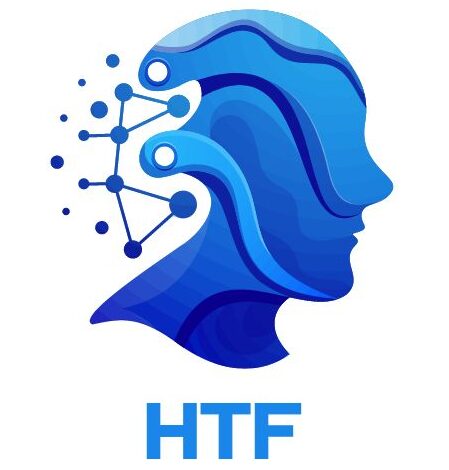Top 13 Configuration Management Tools for 2024

Introduction
This blog will see the Top 13 Configuration Management Tools for 2024. Configuration management is therefore a subset of the systems engineering process. Which focuses on the design, coordination, and operation of complex life systems. As well as the implementation of policies, procedures, tools, and techniques. Which can effectively manage and analyze proposed changes. Which tracks the status of changes and maintains the integrity of the system over time.
Then most of the software configuration management tasks are automated. As well as reducing the likelihood of manual errors. Thus freeing employees to focus on other important matters. Through which today’s market is flooded with such tools. Which makes system management easy and scalable.
Then there is no such thing as complete software, maybe there is some tool. Which is suitable for your unique needs. In addition, we’ve listed some of the best configuration management tools out there. Each of these is accompanied by a specific set of features and different levels of complexity.
1. IBM Rational Synergy
This IBM Rational Synergy is a task-based configuration management tool. Which allows software and systems development teams to accelerate collaboration and overall productivity. It thus has a repository for managing all artwork related to software development, including documents, code scripts, software executables, and libraries.
As well as Rational Synergy IBM works on many operating systems including AIX, Linux, Windows, and Solaris. In addition, it integrates with many other IBM software, such as Rational Range, to provide real-time visibility of your development status with the effect of change requests.
The tool makes it easy to define all files and logical changes. Which is contained in a special publication. As well as it comes with an automatic search function to help you ensure complete and consistent builds. It then also provides fast backup capabilities to reduce downtime. Thus the asset management tool most effectively follows the systematic process of asset development, management, upgrade, and disposal. So it is mostly used in finance and public infrastructure sectors. In addition, a configuration management tool does not manage the financial accounting aspect. It then supports all other service management processes.
2. ServiceNow Configuration Management Database
This service is not a Config Configuration Management Database. Which uses the company’s IT services with all the relevant information on hardware and software components. So it also tracks the relationship between the components. In addition, the tool uses this comprehensive information to provide an organized view of the configuration data. So you get a full view of your company’s infrastructure and services and make informed decisions.
This tool uses this comprehensive information to provide an organized view of configuration data. So you get a full view of your company’s infrastructure and services and make informed decisions. Service Now is built on a data model with standard classification, data quality standards, predefined economics, and general processes. Its main features therefore make it easier to monitor and identify health problems, resolve data integrity issues, and manage data life cycles.
3. Docker
This makes the dock unique. So that’s its lightweight containerization technique. It deploys applications with all the necessary components in the container. Which ensures that it will run on any Linux server, regardless of configurations or settings. This allows users to create, configure, and save containers as templates on other hosts running on the Docker engine. So these templates can be used to create more containers with the same configuration. This way the docker makes your workflow easier and faster.
In addition, you can deploy applications in independent containers and different languages. This reduces the risk of conflict between language, framework, or libraries. Works with all popular development platforms such as Docker, GitHub, CircleCI, and VS Code.
4. Octopus Deploy
This makes it easy to automate the deployment of the Octopus deployment app, NodeJS application, and ASP.NTT web applications, Java applications, and custom scripts in the cloud and on-premises infrastructure. Then with over 400 pre-designed step templates, Octopus simplifies the deployment of some of the most complex of modern or legacy applications. In addition, it supports modern deployment methods such as rolling, canary, and multi-tenancy.
Octopus is also used for publishing management and automated routine and emergency operations. So they have 25,000 customers worldwide, including 25 from CISO, NASA, Stackoverflow, DuCoin, and Fortune 100.
5. Rudder
This rudder is an open-source tool. Allows you to constantly deploy, audit, and reconfigure the configuration of your complex systems. Its working principle is then based on a lightweight localized agent installed on each managed machine. Thus more specifically, the agent deployed on each machine operates in pull mode. As well as retrieve its configuration from the central server. It is then continuously applied autonomously.
Through this, Ruder gives you a web management interface for configuring machines daily. You can then apply security policies through detailed reports. So manage vulnerabilities and analyze your infrastructure. It then does not require any programming skills, even to perform the most professional tasks, thanks to its drag-drop configuration editor.
6. Juju
This Juju app is an open-source pun-source modeling tool. Allows you to efficiently configure, configure, and manage cloud applications via a command line or graphical UI. So you can create your solution in GUI or browse the store to get started. Thus it provides different sets of scripts. Which are called charms. It has everything you need to deploy, configure, and maintain applications. Through charms include application-specific knowledge such as dependencies, interaction options, scale-out practices, and operational events such as backups and updates.
Charms can thus be written in any programming language or configuration management scripting system. Can only be deployed with Linux applications. As well they are available for hundreds of open-source applications. These include MySQL and MongoDB. All you have to do is It’s about writing your charm. Thus the corresponding service will be deployed in seconds.
7. SaltStack
The SaltStack is an event-driven automation tool that helps IT companies manage and secure cloud infrastructure on a large scale. Thus the architecture of the open source tool is based on the idea of executing commands remotely. This then involves performing tasks as complex as using a shell session to give interactive commands to a remote server, or as complex as telling a remote webserver to show a static web page.
It also allows you to target and give commands to numerous machines directly. Thus the tool is based on the idea of a master. Which controls one or more minions. As well as users can issue commands from the master targeting a cluster of minions. Which then performs the tasks specified in the commands and returns the data to the master. As well as you can maintain a variety of modules to handle certain actions.
8. Bamboo
This bamboo app is a continuous delivery and release management tool. It therefore provides build engineers, developers, testers, and system administrators with a common platform for working and sharing data. While keeping sensitive functions such as deploying the product.
It then works with any programming language and popular technologies like Docker, AWS CodeDeploy, and Amazon S3. This way you can choose from several predefined tasks for both build and deployment projects and find free-of-charge. As well as bamboo supports about 100 build agents. As well as giving you enough power to run multiple tests in parallel, keep the queue flowing, and get feedback quickly.
9. SolarWinds Network Configuration Manager
This Solarwinds Network Configuration Manager allows you to develop a specific inventory of your network equipment to get the latest status on all network devices using network scanning and detection. This Solarwinds Configuration Manager app also ensures. Network device files are therefore backed up to protect against unforeseen events.
It then also provides detailed reports of each device. Which you can modify according to your needs. In addition, with the help of this tool, you can increase network security and reliability by following and managing the configuration for switches, routers, and other network devices from HP, Cisco, Dell, Juniper, and more.
It also simplifies critical processes such as running scripts, highlighting configuration errors, and scheduling regular backups. Thus you do not need to put much effort into managing different device configurations in a heterogeneous network. The tool takes care of everything while reducing network downtime as well.
10. CFEngine
Thus to help you manage your mission-critical IT infrastructure securely, CFEngine offers both open source and business options. Its decentralized architecture then allows it to easily scale thousands of nodes. The first production version of CFEngine was released in 1993, so it has a long tradition of development and use. This also means that its code base is efficient and not full of errors.
Through which software provides visibility into compliance information through potential configuration issues, infrastructure inventory data, and intuitive dashboards and reports. It then has a feature called Policy Analyst. Which lets you know how each line of policy performs on the servers. It also provides real-time information about it, allowing you to troubleshoot without guessing.
This CFEngine runs many large data centers. It has thousands of servers and registered users from more than 100 countries. It is therefore trusted by numerous popular brands including Samsung, Panasonic, Pfizer, and LinkedIn.
11. Chef
The words written in Ruby and Erlang are used to streamline the configuration and maintenance of the organization’s servers. So it can be integrated with many cloud-based platforms to automatically provision and configure both small and large systems. These include OpenStack, Micro .ft Azure, Amazon EC2, Oracle Cloud, and Google Cloud platforms.
It then makes the chef unique and is a declarative approach to programming. So it eliminates the need to write long and complicated code. Which can wreak havoc in the long run. Thus the automation tool allows you to deploy and manage software applications on all devices with just a few clicks.
So it can be used by team members. Those who are not very skilled with programming. In addition, the chef uses pure-ruby, domain-specific language. Thus some of Ruby’s basic skills are required to write system configuration “recipes”. Chef develops its 100% open-source software without any restrictions on its use under the Apache 2.0 license. Since then its commercial distribution, the Shuff Enterprise Automation Stack, has been built with just that open-source code. As such, the application integrates automation and security. In addition, it is used by more than half of the Fortune 500 companies.
12. Ansible
This responsive app is a simple IT automation engine. Which automates application deployment, configuration management, intra-service orchestration, and many other IT requirements. Which instead of operating one system at a time, how can all those underlying systems be interconnected? So modeling the IT infrastructure by describing it. Thus does not use any agent and additional custom security infrastructure responsible. It is very easy to deploy as well.
Then uses its declarative language. It also lets you describe your automation tasks in a way that comes in plain English. So you can write standalone modules in different languages like Python, Ruby, Pearl, and Bash. Responsive operates these modules. He then removes them when his job is done.
So using Ansible, you can configure both systems like Windows and Unix. It also works on a variety of cloud environments including bare-metal hosts, virtual machines, and VMware, KVM, Linode, OpenStack, Azure, Atom, Digital Ocean, Cloud Stack, and Google Cloud Platform.
13. Puppet
This puppet app is widely used for server configuration, deployment, management, and creation of many applications and services across the company’s infrastructure. Thus written in Ruby, Puppet is specifically designed to manage the configuration of Windows and Linux systems. It then uses domain-specific language to describe the system configuration.
The software then automatically puts everything in its desired state while giving you control to make changes as your business needs to evolve. So unlike other tools, the puppet features topical awareness and the desired state contradictory detection. It also includes more than 5,000 community-contributed modules.
This open-source puppet app offers freely downloadable OS-specific agent packages, and largely scalable server and data warehousing capabilities. This commercial puppet app features GUI, role-based access control, API, and event-based automation tools for effective management of nodes. In addition, the main purpose of all equipment is to maintain accurate and detailed records of systems and services. As well as updating it regularly. Through which they perform dozens of important functions.
I hope you learn something new about gardening tools by reading this Top 13 Configuration Management Tools for 2024 blog and thank you very much for reading




